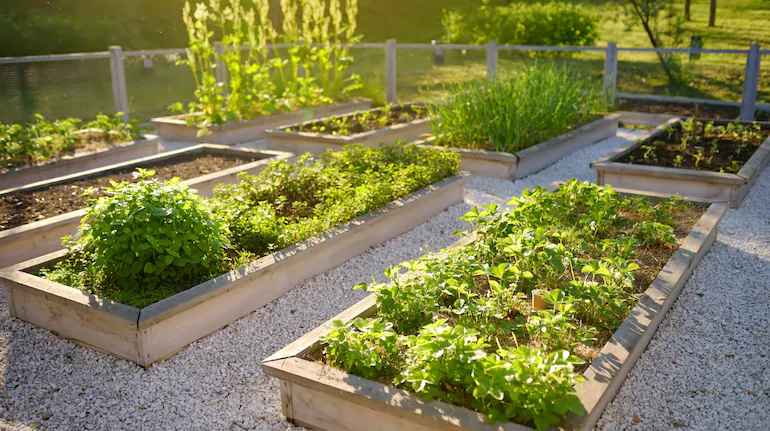In an era where environmental consciousness is more critical than ever, sustainable gardening offers a practical and rewarding way to contribute to a healthier planet. By cultivating plants in a controlled environment like a greenhouse, you can significantly reduce your ecological footprint while enjoying the benefits of fresh, homegrown produce year-round.
In this guide, we’ll explore the essentials of creating and maintaining a sustainable greenhouse, focusing on eco-friendly practices and the economic and environmental benefits they bring.
Choosing the Right Location and Designing Your Greenhouse
Location, Location, Location
Selecting the ideal location for your greenhouse is crucial for maximizing its sustainability. Here are some key considerations:
- Sunlight: Position your greenhouse to receive maximum sunlight, ideally south-facing if you’re in the northern hemisphere. This reduces the need for artificial lighting and heating.
- Wind Protection: Choose a spot that’s sheltered from strong winds to minimize heat loss and structural damage.
- Accessibility: Ensure easy access to water sources and your main garden area to streamline maintenance.
Designing for Sustainability
When it comes to design, think long-term and eco-friendly:
- Materials: Opt for sustainable materials like reclaimed wood, recycled metal, or durable polycarbonate panels. Avoid PVC, as it’s less environmentally friendly.
- Insulation: Invest in good insulation to retain heat and reduce the need for additional heating. Double-glazing or thermal screens can be effective.
- Ventilation: Incorporate passive ventilation systems, such as roof vents and louvered side vents, to regulate temperature and humidity without relying on electricity.
If you’re in Idaho, you can purchase DIY hoophouses from local suppliers to avoid the hassle and cost of traditional greenhouse construction.
Selecting Plants That Thrive in a Greenhouse Environment
Native and Heirloom Varieties
Choose plants that are well-suited to greenhouse conditions and contribute to biodiversity:
- Vegetables: Tomatoes, cucumbers, peppers, and leafy greens are excellent choices that thrive in a controlled environment.
- Herbs: Basil, mint, and parsley grow well indoors and can enhance your culinary experiences.
- Flowers: Consider adding native wildflowers or heirloom varieties to support local pollinators and biodiversity.
Companion Planting
Enhance sustainability by practicing companion planting, which involves growing certain plants together to improve growth and deter pests. For example, planting basil alongside tomatoes can boost both plants’ health and productivity.
Implementing Eco-Friendly Maintenance and Pest Control Strategies
Organic Soil and Fertilizers
Use organic soil and compost to enrich the growing medium with essential nutrients. Homemade compost, worm castings, and organic fertilizers like fish emulsion can provide a sustainable alternative to chemical fertilizers.
Water Conservation
Implement water-saving techniques such as:
- Rainwater Harvesting: Collect rainwater in barrels and use it to irrigate your greenhouse plants.
- Drip Irrigation: Install a drip irrigation system to deliver water directly to plant roots, reducing evaporation and waste.
- Mulching: Apply organic mulch to soil surfaces to retain moisture and suppress weeds.
Natural Pest Control
Avoid chemical pesticides by adopting natural pest control methods, including:
- Beneficial Insects: Introduce ladybugs, lacewings, and predatory mites to control aphids, spider mites, and other pests.
- Neem Oil: Use neem oil as a natural pesticide and fungicide, effective against a variety of common greenhouse pests.
- Companion Planting: As mentioned earlier, companion planting can also deter pests and improve plant health.
The Economic and Environmental Benefits of Sustainable Gardening in a Greenhouse
Economic Benefits
- Cost Savings: Growing your own produce reduces grocery bills and can provide significant savings over time.
- Extended Growing Season: A greenhouse allows you to extend the growing season, producing food year-round and reducing dependence on store-bought produce.
Environmental Benefits
- Reduced Carbon Footprint: By growing your own food, you can reduce the carbon emissions associated with transportation and packaging of commercial produce.
- Biodiversity: Sustainable gardening practices support local wildlife and biodiversity, contributing to a healthier ecosystem.
- Resource Efficiency: Efficient use of water, energy, and natural fertilizers minimizes waste and conserves resources.
Conclusion
Embracing sustainable gardening through the creation and maintenance of a greenhouse is a fulfilling endeavor that yields numerous economic and environmental benefits. By selecting the right location, designing with sustainability in mind, choosing appropriate plants, and implementing eco-friendly maintenance strategies, you can create a thriving greenhouse that supports both your health and the planet’s well-being.
Ready to embark on your sustainable gardening journey? Start planning your own greenhouse today and join the growing community of eco-conscious gardeners making a positive impact. Share your progress and tips with us, and let’s cultivate a greener future together.

